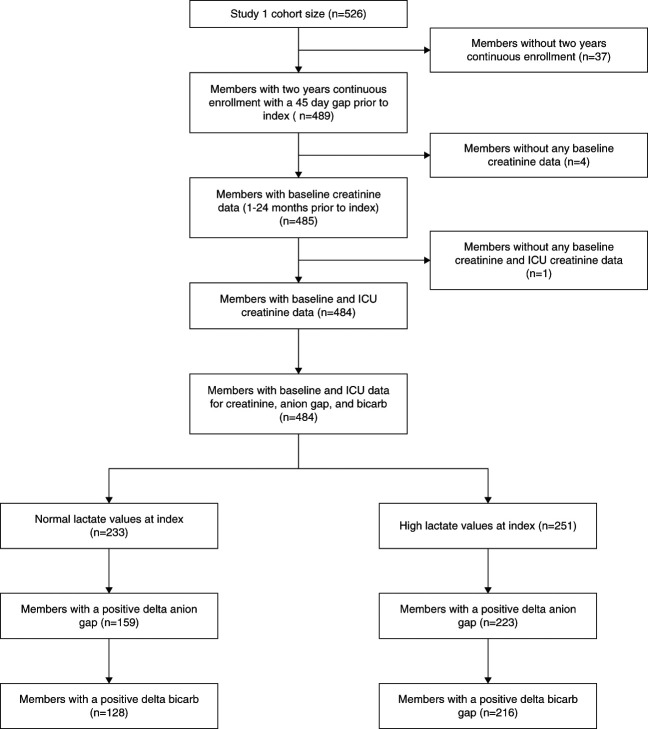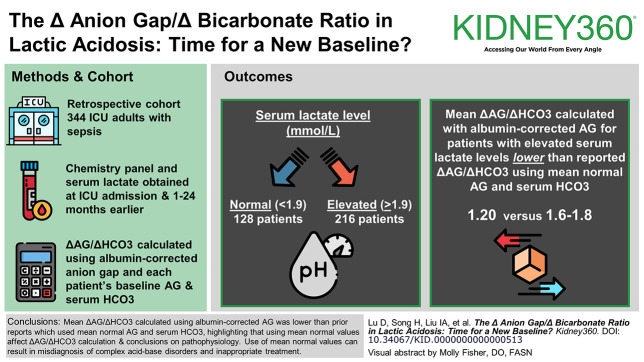乳酸性酸中毒中的Δ阴离子间隙/Δ碳酸氢盐比值:是时候确定新基线了吗?
IF 3
Q1 UROLOGY & NEPHROLOGY
引用次数: 0
摘要
背景:δ阴离子间隙和δ碳酸氢盐的比值(ΔAG/ΔHCO3)用于检测高阴离子间隙代谢性酸中毒患者同时存在的酸碱紊乱。乳酸酸中毒患者的ΔAG/ΔHCO3 比值为 1.6-1.8:1,这一比值是根据 AG 和血清 HCO3 平均正常值的有限数据得出的。本研究的目的是首次使用每位患者的基线 AG 和血清 HCO3 对ΔAG/ΔHCO3 进行检测:这是一项针对脓毒症成人重症监护病房患者的回顾性队列研究。研究人员从同时绘制的化验单中获取实验室数据,包括入院时的阴离子间隙和血清乳酸。基线 AG、HCO3 和白蛋白测量值是在入住 ICU 前 1-24 个月获得的。使用白蛋白校正阴离子间隙和每位患者的基线 AG 和血清 HCO3 计算出 ΔAG/ΔHCO3 :结果:共纳入 344 名患者。结果:共纳入 344 名患者,其中 128 名患者血清乳酸水平正常(≤1.9 mmol/L),216 名患者血清乳酸水平升高(>1.9 mmol/L)。对血清乳酸水平升高(>1.9 mmol/L)的 216 名患者计算了ΔAG/ΔHCO3。所有血清乳酸水平升高患者的平均ΔAG/ΔHCO3为1.20(标清1.50):使用白蛋白校正阴离子间隙和每位患者的基线 AG 和血清 HCO3 计算得出的平均 ΔAG/ΔHCO3 为 1.20。之前使用平均正常 AG 和血清 HCO3 的文献中报告的 ΔAG/ΔHCO3 为 1.6-1.8,这表明使用平均正常值会影响 ΔAG/ΔHCO3 的计算以及随后对潜在病理生理学的结论。使用这些平均正常值可能会导致复杂酸碱紊乱的误诊和不恰当的治疗。我们的分析表明,ΔAG/ΔHCO3 升高可能是由于未测量的阴离子导致 AG 升高。本文章由计算机程序翻译,如有差异,请以英文原文为准。



The Δ Anion Gap/Δ Bicarbonate Ratio in Lactic Acidosis: Time for a New Baseline?
求助全文
通过发布文献求助,成功后即可免费获取论文全文。
去求助

 求助内容:
求助内容: 应助结果提醒方式:
应助结果提醒方式:


